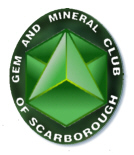Novembers meeting is on the 6th at 8 pm
Meteorite falls have undoubtedly been witnessed, and meteorite finds (mostly irons) venerated or valued for the properties of the metal, for millennia. However, in the western world, it was not just the fall of the L’Aigle meteorite (France, 1803) that meteorites were generally accepted to fall from outer space. We do not know every about meteorites today. But astonishing progress has been made in the past 221 years, and especially since World War II. The Science associated with extra-terrestrial samples covers meteorites, Moon rocks, interplanetary dust, recent sample recoveries from asteroids and comets, and remote sensing of the surface of Mars. The disciplines are diverse: physics and chemistry, astronomy, astrobiology, mineralogy and geochemistry. The analytical tools used for space probes and in mineral exploration were often crafted and honed in pursuit of meteorite studies. Here we will make a quick tour of some of the main classes of meteorite, and their significance. We will look at meteorites form the asteroid belt, Mars and the Moon. Not forgetting the mineralogy of these special samples! There are currently some 155 “off-world” minerals first described in Moon rocks and meteorites, and som 277 species previously described on Earth, for approximately 432 minerals found in meteorites (7.2% of 6,006 IMA-approved species as of January 2024). A few highlights will be presented from a new compilation of meteorite minerals (de Gourestier, Wilson and Heard, in Prep).
Bio of Our Speaker
Geologist and mineralogist Graham Wilson has spent 40-plus years in research and consulting, notably under the banner of his company, Turnstone Geological Services Limited. His longstanding interests span aspects of economic geology, archaeology, meteoritics and bibliographic databases.

